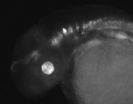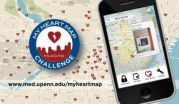(Press-News.org) Boston, Mass, Nov. 5, 2012— A new study by researchers in Boston Children's Hospital's Division of Emergency Medicine indicates that a nationwide standard on booster seat laws for children 4 feet 9 inches and shorter, or up to 8 years old, would save lives. The findings were published online Nov. 5, 2012, in the journal Pediatrics.
Boston Children's researchers reviewed data from Fatality Analytic Reporting System, analyzing child deaths in motor vehicle accidents, looking specifically at whether the crash and resulting deaths or injuries took place in a state with or without a booster seat law. If the state did have a booster law, the team noted its age and height requirements. The results varied from state to state, as many state's booster seat laws have different age and height requirements, but overall findings were clear: states with booster seat laws had significantly fewer instances of death or injury from motor vehicle accidents, especially among children in the 6- to 7-year age group. Key findings include:
Out of 9,848 cases reviewed over a 10-year period, states with booster seat laws for children 4 to 6 had a roughly 20 percent lower rate of death and incapacitating injuries from motor vehicle crashes than states without booster seat laws.
States with booster seat laws that extended to 6- and 7-year-olds had a 35 percent decreased rate of death or incapacitating injury.
The AAP recommends that children be placed in belt-positioning booster seats after they grow too large for a car seat—around 4 years old—and until the child attains a height of about 4 feet 9 inches, usually around 8 to 12 years old. Without boosters, many children shorter than 4 feet 9 inches run the risk of having the seat belt rest on their throat and abdomen, instead of their chest and lap. In the event of a crash, belts in that position may cause serious, even fatal, injuries to the intestines and spine.
Despite the effectiveness of booster seats in preventing this type of injury among children, usage remains low. According to reports, booster seats are used by only about half of children 4 to 5 years old and 35 percent of those 6 to 7 years old.
"Based on our findings, booster seat use for children under the age of 8 or 4 feet 9 inches really should go beyond causal suggestion," says Rebekah Mannix, MD, MPH, of Boston Children's Division of Emergency Medicine, lead author on the paper. "It's clear that these laws save lives and we recommended all states adopt them."
"At the end of the day we all want children to be safe," adds Lois Lee, MD, MPH, co-author on the study. "Data show booster seat laws help protect children, and we hope it can convince lawmakers to adopt laws that require kids to be in the proper child passenger restraint (car seat and booster seat) until the recommended age and height."
###
Boston Children's Hospital is home to the world's largest research enterprise based at a pediatric medical center, where its discoveries have benefited both children and adults since 1869. More than 1,100 scientists, including nine members of the National Academy of Sciences, 11 members of the Institute of Medicine and nine members of the Howard Hughes Medical Institute comprise Boston Children's research community. Founded as a 20-bed hospital for children, Boston Children's today is a 395-bed comprehensive center for pediatric and adolescent health care grounded in the values of excellence in patient care and sensitivity to the complex needs and diversity of children and families. Boston Children's also is a teaching affiliate of Harvard Medical School. For more information about research and clinical innovation at Boston Children's, visit: http://vectorblog.org/.
New research suggests standardized booster seat laws could save lives of children
2012-11-05
ELSE PRESS RELEASES FROM THIS DATE:
Computers 'taught' to ID regulating gene sequences
2012-11-05
Johns Hopkins researchers have succeeded in teaching computers how to identify commonalities in DNA sequences known to regulate gene activity, and to then use those commonalities to predict other regulatory regions throughout the genome. The tool is expected to help scientists better understand disease risk and cell development.
The work was reported in two recent papers in Genome Research, published online on July 3 and Sept. 27.
"Our goal is to understand how regulatory information is encrypted and to learn which sequence variations contribute to medical risks," says ...
Superstorm animation
2012-11-05
A computer animation produced by University of Delaware researchers shows the explosive development of Hurricane Sandy, the superstorm and its unusual track. View the animation on the University's UDaily website at http://www.udel.edu/udaily/2013/nov/animation110212.html
Matt Shatley, computer research specialist in UD's College of Earth, Ocean, and Environment (CEOE), assembled the animation by digitally stitching together about 800 infrared images taken by GOES, the Geostationary Operational Environmental Satellite, which keeps a continuous eye on the continental United ...
Japanese family members less likely than others to give CPR for cardiac arrest
2012-11-05
Family members didn't give CPR for cardiac arrests as often as passers-by or friends in a Japanese study presented at the American Heart Association's Scientific Sessions 2012.
Cardiac arrest is the sudden loss of heart function, typically resulting from an abnormal heart rhythm that causes the heart to quiver erratically and stop pumping blood. According to the American Heart Association, effective bystander CPR provided immediately after sudden cardiac arrest can double or triple a victim's chance of survival.
In a review of 547,218 cardiac arrests occurring in 2005-09, ...
New device could allow your heartbeat to power pacemaker
2012-11-05
An experimental device converted energy from a beating heart to provide enough electricity to power a pacemaker, in a study presented at the American Heart Association's Scientific Sessions 2012.
The findings suggest that patients could power their pacemakers — eliminating the need for replacements when batteries are spent.
In a preliminary study, researchers tested an energy-harvesting device that uses piezoelectricity — electrical charge generated from motion. The approach is a promising technological solution for pacemakers, because they require only small amounts ...
Heart disease map of England highlights growing social inequality in older ages
2012-11-05
A study estimating the death rate from heart and circulatory disease in each electoral ward in England has found that despite considerable improvements since the 1980s, the difference between the wealthiest and poorest communities has widened for people over 65.
Mortality from heart and circulatory disease – the leading cause of death in the UK – declined in most places between 1982 and 2006, but for men and women aged 65 or older, the decline was smaller in the most deprived communities, resulting in a wider gap between rich and poor.
The authors, from Imperial College ...
Smallholder farmers need improved stake in Nile's development
2012-11-05
ADDIS ABABA (5 NOVEMBER 2012)—A new book finds that the Nile river, together with its associated tributaries and rainfall, could provide 11 countries—including a new country, South Sudan, and the drought-plagued countries of the Horn of Africa—with enough water to support a vibrant agriculture sector, but that the poor in the region who rely on the river for their food and incomes risk missing out on these benefits without effective and inclusive water management policies.
The Nile River Basin: Water, Agriculture, Governance and Livelihoods, published by the CGIAR Challenge ...
Cardiac bypass surgery superior to non-surgical procedure for adults with diabetes and heart disease
2012-11-05
Adults with diabetes and multi-vessel coronary heart disease who underwent cardiac bypass surgery had better overall heart-related outcomes than those who underwent an artery-opening procedure to improve blood flow to the heart muscle, according to the results from an international study. The research was supported by the National Heart, Lung, and Blood Institute (NHLBI), part of the National Institutes of Health.
The study compared the effectiveness of coronary artery bypass graft (CABG) surgery with a non-surgical procedure known as percutaneous coronary intervention ...
Penn Medicine contest maps 1,400 lifesaving AEDs via crowdsourcing contest fueled by smart phones
2012-11-05
LOS ANGELES – A crowdsourcing contest that sent hundreds of Philadelphians to locate and catalog the locations of AEDs throughout the nation's fifth largest city led to the identification of more than 1,400 automated external defibrillators in public places, according to a study from researchers from the Perelman School of Medicine at the University of Pennsylvania that will be presented today at the American Heart Association's Scientific Sessions 2012 (Abstract #17478). The efforts of these "citizen scientists" are expected to help provide crucial data to ensure quick ...
Families 'Play Nice' in Alpha Colony, Which Combines Competative and Cooperative Play
2012-11-05
DreamQuest Games has luanched its Kickstarter campaign for all new family-friendly game, Alpha Colony. What makes the game wholly unique is it's interesting balance of competitive and cooperative play. The goal of the game is to build the most prosperous prospector on a new and distant colony. But in Alpha Colony, it takes more than being the best to win. If the colony doesn't cooperate to thrive as a whole, everyone loses.
Alpha Colony's emphasis on cooperation makes it a game the whole family can enjoy. While creating an interesting dynamic for stronger players, it ...
Spectacular Pro/Am Holiday Dance Showcase coming to Rockport, Maine December 2, 2012
2012-11-05
Elegant Ballroom, Spicy Latin, Hip Hop, Contemporary, and steamy Belly Dance performed by individuals, couples, and choreographed groups all under the lights of Strom Auditorium (Strom Auditorium is located within Camden Hills Regional High School, Rt. 90, Rockport, Maine). Watch gorgeous costuming and stage settings from your comfortable seats in this beautiful state of the art facility. Dancers from all age groups will perform and there is something for every age group to see! Tickets just $12 in advance or $15 at the door. 207-594-0940 or http://www.swingnsway.com/showcase.htmlTickets ...


